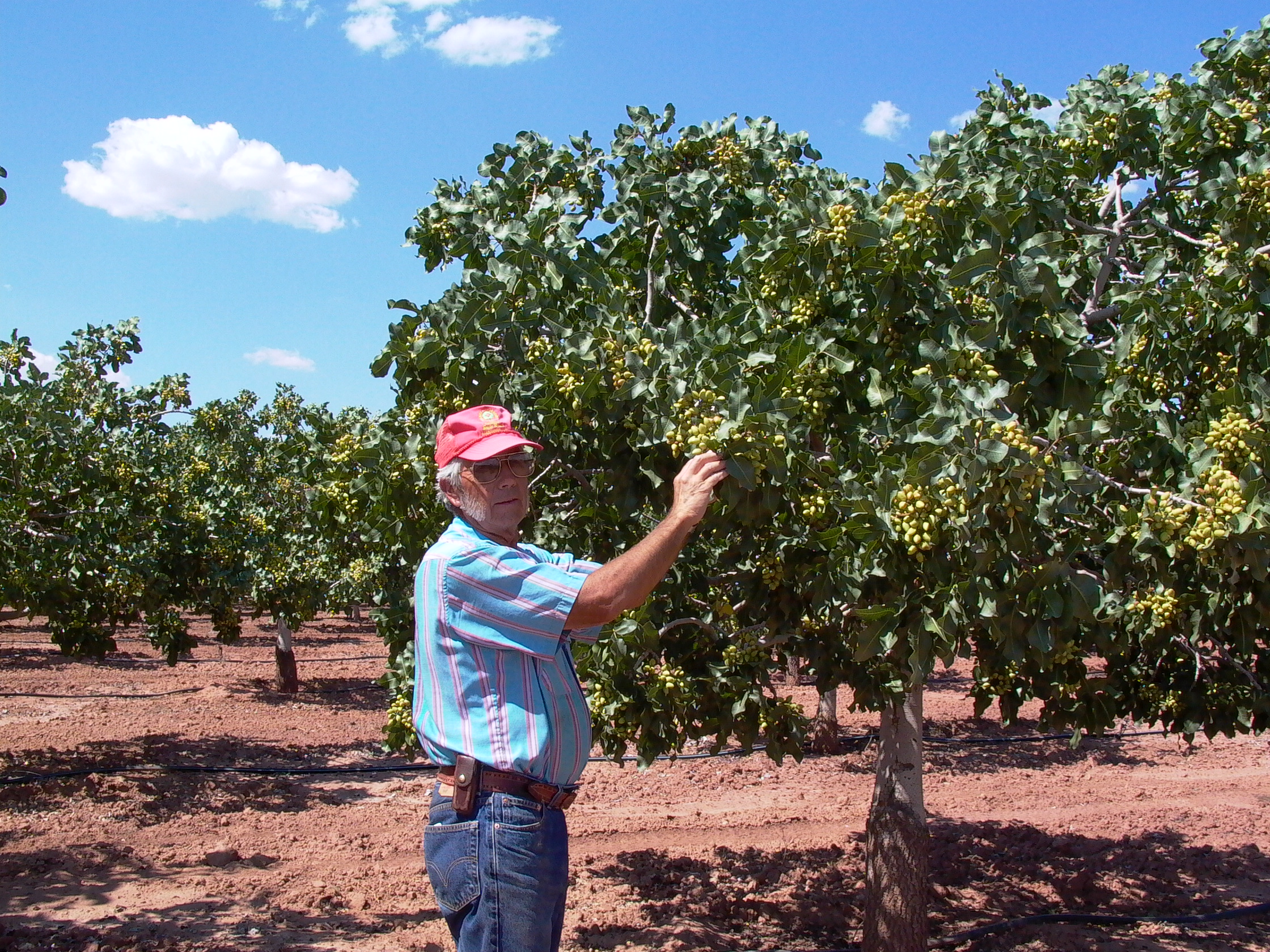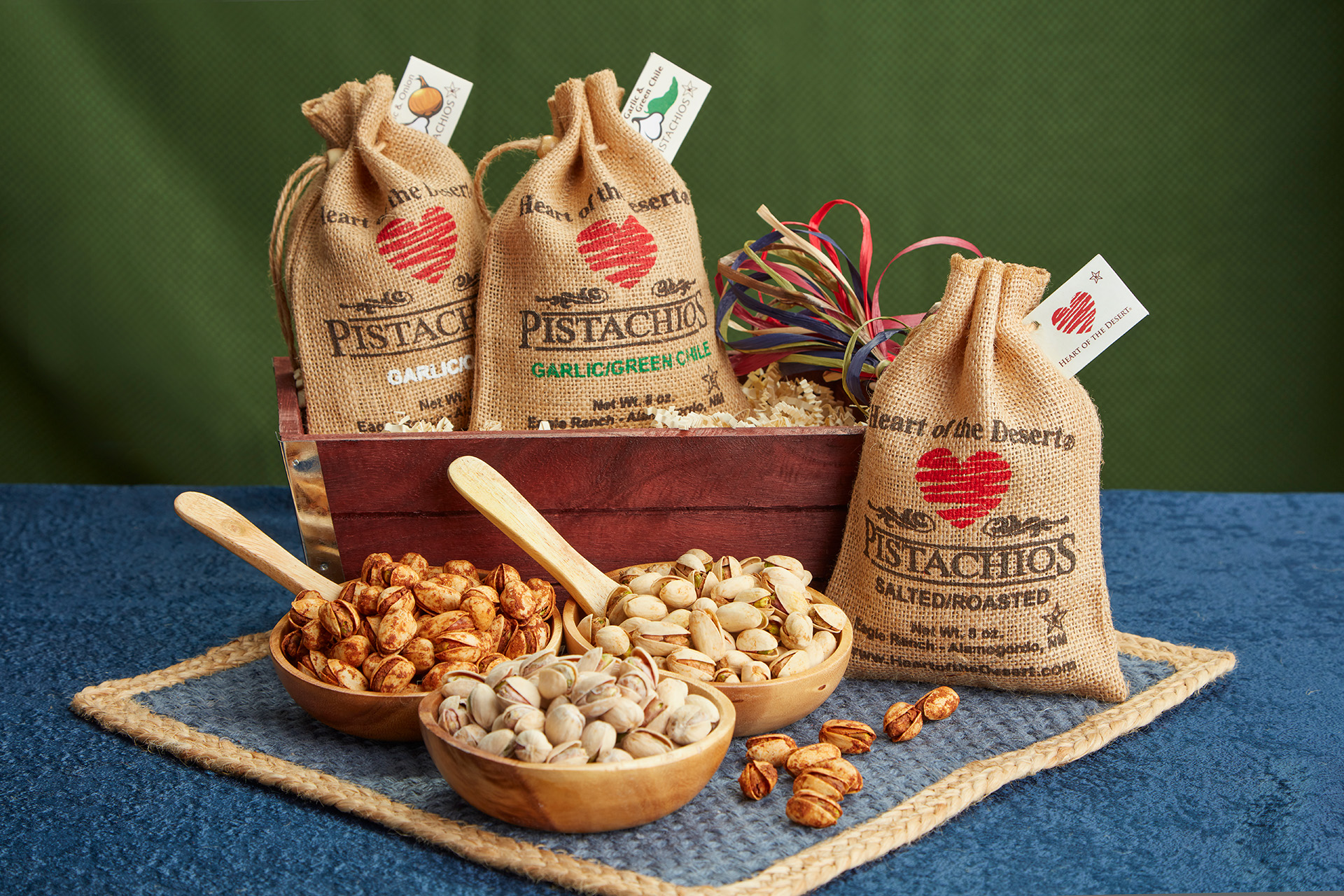
How do I buy pistachio trees?
We normally sell pistachio trees in late January-February of each year.. If you will give us your name and address, we will contact you when we have trees to sell. This does not guarantee you the purchase of a tree. Trees will be available on a first come, first serve basis.
How can I request to be contacted when you have trees to sell?
Fill out the request form, and we’ll add you to our list. Click here
Do you ship pistachio trees?
No, trees must be picked up at our retail store in Alamogordo, New Mexico.
How many trees do I need?
You need a minimum of 2 trees—1 male (the pollinator) and 1 female (the bearing tree). One male will have enough pollen to cover up to 10 females. California’s growers are now going to 1 pollinator (male tree) per 15 bearing trees (females). If you have the space, we still recommend a 1 to 10 ratio to insure better pollen coverage.
Which tree produces pistachios?
The male tree produces pollen and the female tree produces the pistachios.
Can I grow pistachios where I live?
The pistachio tree is a native desert plant that needs an arid climate. It must have long, hot, dry summers and chilling in winter (1,000 hours under 45° F) but the ground should not freeze. The Phoenix desert is too warm in the winter for pistachio production, and northern New Mexico is too cold in the winter. Pistachio trees will not tolerate high humidity in the summer, and they are sensitive to spring frosts. The root system will not tolerate prolonged wet conditions. Producing areas in the United States are the San Joaquin Valley in California (Stockton, Fresno, Madera, Visalia, and Bakersfield), a small area around Tucson, Arizona and the southeast corner of Arizona (Douglas and Wilcox), south central New Mexico (Lordsburg, Deming, Las Cruces, Alamogordo, and Carlsbad), and parts of West Texas (El Paso to Pecos).
It is also recommended that pistachio trees not be planted in fields where cotton was previously planted. In these areas, tree mortality is high due to Verticillium Wilt disease caused by a soil-borne fungus. However, California has developed a wilt resistant variety called the UCB-1.
If I received a postcard last year, will I automatically receive one this year?
How much do pistachio trees cost?
Do you guarantee the trees?
Do you sell rootstock?
What size are the trees that are for sale?
How tall and wide will my tree get?
How old are the trees when purchased?
How big is the container the trees come in?
When will my tree start producing pistachios?
How long will my tree produce pistachios?
What type of trees do you sell?
Can I take trees into Mexico?
How far apart should I plant the trees?
What type of fertilizer should I use and when should I fertilize?
How often do I water the trees?
When is the best time to prune the trees?
Can I purchase some budwood?
How do I graft buds onto rootstock and when is the best time to do this?
Buds are collected in February for April use or in July for immediate (for optimum grafting). Male buds are taken from male trees and female buds are taken from female trees. Buds are wrapped in a wet cloth and kept in the refrigerator until use. The fresher the buds, the better chance you have of successfully grafting your tree. The only time to graft buds is when the bark is slipping (you can peel the bark away) and leaves are coming out on the tree. T-budding is the technique used on pistachios.To graft a bud, make a vertical cut about 1 inch long in the rootstock. Make a horizontal cut through the bark about 1/3 the distance around the rootstock. Give the knife a slight twist to open the two flaps of bark. To cut the bud, starting about ½ inch below the bud, slice under the bud until about 1 inch beyond the bud. About ¾ inch above the bud, a horizontal cut is made through the bark and into the wood, permitting the removal of the bud piece. Insert the bud into the cut on the rootstock and secure the bud to the tree using bud rubbers. Eventually the bud rubbers will dissolve on the tree making it unnecessary to remove the rubber. Bud rubbers can be purchased at a nursery.
If the bud takes, you will get a branch growing on your tree. If it doesn’t take, it will dry up. If the bud doesn’t take, graft the tree again. There are professionals available who will graft trees for you; ask at your local nursery for anyone who is familiar with T-budding.
How can I get more information on the pistachio tree?
Fill out the request form, and we’ll send you information. Click here to request information.
Should I spray trees with insecticide?
Spray trees with insecticide as needed.

